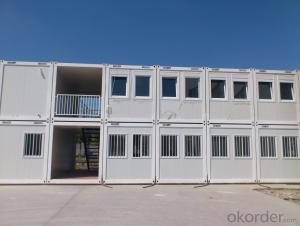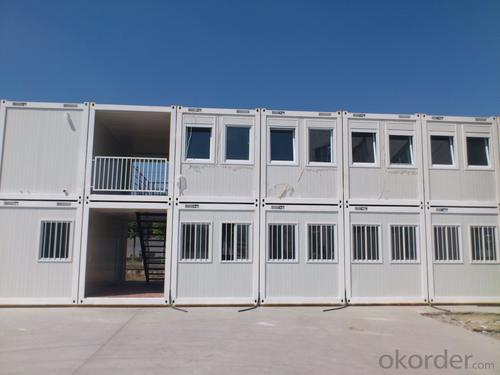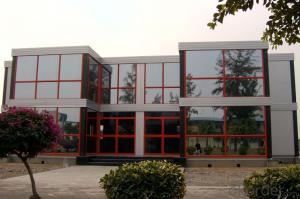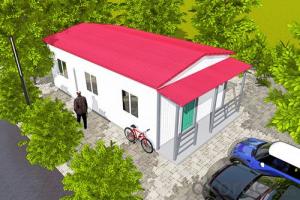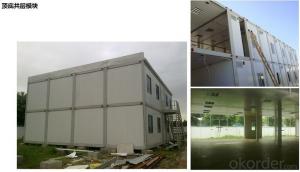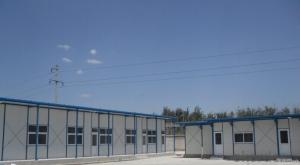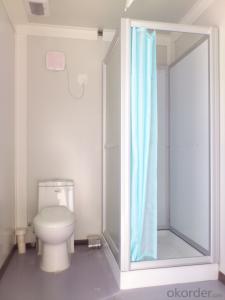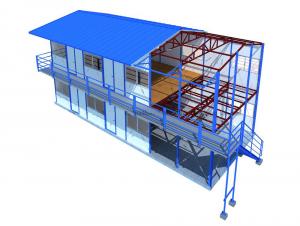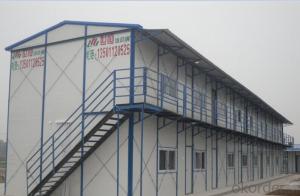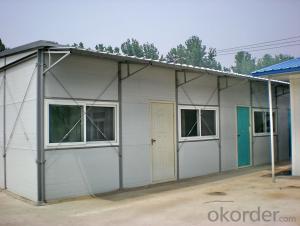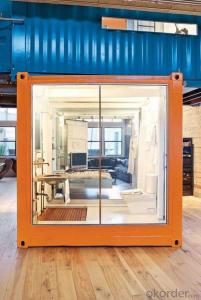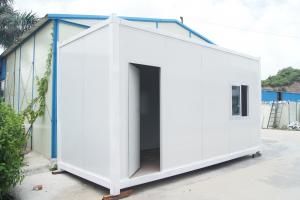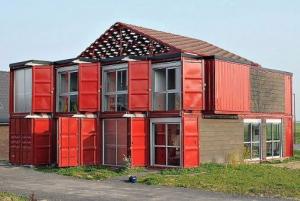Multi-Storey Sandwich Panel Prefabricated Container Movable House
- Loading Port:
- Tianjin
- Payment Terms:
- TT OR LC
- Min Order Qty:
- -
- Supply Capability:
- 20000 Set set/month
OKorder Service Pledge
OKorder Financial Service
You Might Also Like
Multi-Storey Sandwich Panel Prefabricated Container Movable House
Cheap Price but High Quality Two Storey Prefabricated Container Mobile House
Affordable Prefabricated Container Mobile House
1.Advantages of flatpack container house Features:
Efficient transportation
Fast construction
Flexible combination
Cost saving
Green & Sustainability
Multi-Storey Sandwich Panel Prefabricated Container Movable House
Cheap Price but High Quality Two Storey Prefabricated Container Mobile House
Affordable Prefabricated Container Mobile House
2. General information:
| Item | Description |
| Name | prefab shipping container homes |
| Structure |
|
| Wall Panel |
|
| Insulation |
|
| Electrical |
|
| Door |
|
| Window |
|
| | |
Multi-Storey Sandwich Panel Prefabricated Container Movable House
- Q: Can container houses be built with a home automation system?
- Certainly, container houses can be constructed with a home automation system in place. By utilizing a home automation system, one can effectively integrate and manage various electronic devices and systems within the container house. These encompass, but are not confined to, lighting, heating and cooling systems, security cameras, door locks, and entertainment systems. Through the assistance of sensors, controllers, and a central hub, the home automation system can offer convenience, energy efficiency, and heightened security to the inhabitants of the container house. Furthermore, the adaptable nature of container houses makes it comparably simpler to install and personalize the home automation system to meet the specific requirements and preferences of the homeowners. Whether it involves remotely adjusting the temperature, scheduling automated lighting, or monitoring the security of the house via a smartphone, container houses can unquestionably reap the advantages of incorporating a home automation system.
- Q: Are container houses more affordable than traditional houses?
- Container houses are generally more affordable than traditional houses due to several contributing factors. Firstly, the cost of purchasing and converting shipping containers into livable spaces is significantly lower compared to the construction of a traditional house. Containers can be purchased at a fraction of the price of building materials needed for a conventional house. In addition, container houses require less labor and time to construct, resulting in reduced construction costs. Since containers are pre-fabricated structures, they can be quickly assembled on-site, saving both time and money compared to the lengthy construction process of a traditional house. Moreover, container houses are known for their energy efficiency, which can significantly reduce long-term costs. They are built with sturdy materials that provide excellent insulation, resulting in lower heating and cooling expenses. Furthermore, container houses offer high flexibility and customization options, allowing homeowners to choose the size, layout, and design that suits their needs and budget. This aspect of customization allows for cost control and the ability to adapt the house to individual preferences. However, it is important to note that the final cost of a container house can vary depending on factors such as location, design complexity, additional features, and desired level of customization. Nevertheless, in most cases, container houses offer a more affordable alternative to traditional houses while still providing a comfortable and functional living space.
- Q: How do container houses compare to traditional houses in terms of space?
- Container houses have gained popularity due to their efficient use of space, making them a viable alternative to traditional houses. Unlike traditional houses with fixed dimensions, container houses offer easy customization and expansion options to meet different space requirements. Compared to traditional houses, container houses are generally smaller in size as they are constructed using shipping containers that are usually 8 feet wide and 20 or 40 feet long. However, despite their compact size, container houses can still provide ample living space by employing innovative interior design and clever storage solutions. One advantage of container houses lies in their ability to maximize every square inch of space. The limited dimensions compel homeowners to meticulously plan and optimize the layout, resulting in highly functional living areas. Many container houses feature open floor plans, multi-purpose furniture, and built-in storage to make the most of the available space. This efficient utilization of space can create a surprisingly spacious and comfortable living environment. In contrast, traditional houses often boast larger square footage, offering bigger rooms and more storage options. These houses typically have various rooms, such as bedrooms, living areas, dining rooms, and kitchens. Traditional houses often have separate rooms for specific purposes, allowing for increased privacy and flexibility in room usage. The decision between a container house and a traditional house ultimately hinges on personal preferences and needs. Those who prioritize cost-effectiveness and eco-friendliness will find container houses to be an excellent choice. They are generally more affordable to build, and their use of recycled shipping containers helps reduce waste. Additionally, container houses are often portable and can be relocated, providing flexibility and adaptability. On the other hand, traditional houses offer more space and room for expansion. They come with larger yards, garages, and basements, providing additional storage options and outdoor activities. Traditional houses also tend to have more rooms, making them suitable for larger families or individuals who require separate spaces for work or hobbies. In conclusion, container houses and traditional houses differ in terms of space utilization. Container houses excel in efficiency and compactness, utilizing available space through innovative design and storage solutions. Traditional houses, on the other hand, offer more square footage and room for expansion, providing larger living areas and additional storage choices. Ultimately, the choice depends on individual preferences, budget, and lifestyle.
- Q: Are container houses resistant to snow or heavy snowfall?
- Container houses can be made to be resistant to snow or heavy snowfall, but it largely depends on the design and construction of the house. When properly designed and constructed, container houses can withstand heavy snow loads. One of the advantages of container houses is their structural strength. Shipping containers are built to withstand harsh conditions, including heavy loads and extreme weather. However, it is important to ensure that the container is reinforced and insulated properly to handle snow loads. The roof design plays a crucial role in determining the snow resistance of a container house. A pitched roof with a steep angle is recommended, as it allows snow to slide off easily, reducing the risk of accumulation and potential damage to the house. Additionally, reinforcing the roof with additional support beams or trusses can further enhance its snow load capacity. Insulation is another important factor to consider. Proper insulation helps to maintain a consistent indoor temperature, preventing snow from melting on the roof and causing ice damming. Insulating the walls and floor of the container house also helps to retain heat, reducing the risk of snow infiltration and potential damage. It is worth noting that local building codes and regulations should be followed to ensure the container house meets the required snow load requirements. Consulting with a professional architect or engineer experienced in container house construction can help ensure that the design and construction of the house are suitable for heavy snowfall conditions. In conclusion, container houses can be made resistant to snow or heavy snowfall conditions with proper design, construction, and insulation. By reinforcing the structure, designing a suitable roof, and insulating the house, container homes can effectively withstand heavy snow loads, providing a safe and comfortable living space even in areas with significant snowfall.
- Q: Can container houses be converted into offices or studios?
- Indeed, container houses have the potential to be transformed into offices or studios without a doubt. The adaptability and modular characteristics of container houses render them suitable for repurposing into various types of spaces, notably offices and studios. They offer a cost-effective and eco-friendly alternative to conventional construction methods, as containers are easily accessible and can be readily personalized to suit specific requirements. To convert container houses into comfortable and functional workspaces, one can incorporate insulation, windows, doors, and appropriate ventilation systems. The interior can be tailored to include separate rooms or open plan layouts, depending on the specific needs of the office or studio. Moreover, containers can be stacked or joined together to create larger spaces or multi-level structures, thus allowing for expansion and flexibility. The robust and secure nature of container houses also renders them suitable for office or studio environments. They are constructed to endure harsh weather conditions, ensuring the safety and protection of the occupants and their equipment. Additionally, container houses can be equipped with essential amenities such as electricity, plumbing, and internet connectivity, making them fully functional workspaces. The conversion of container houses into offices or studios not only offers a distinctive and visually appealing environment but also contributes to sustainable practices. By repurposing shipping containers, we reduce the demand for new construction materials and minimize waste. It serves as an innovative and environmentally conscious solution for creating contemporary, efficient, and adaptable workspaces.
- Q: Are container houses suitable for pet-friendly living?
- Yes, container houses can be suitable for pet-friendly living. They can be customized to include pet-friendly features such as pet doors, secure fencing, and ample indoor and outdoor space. Additionally, container houses typically have low-maintenance materials, making it easier to clean up after pets. However, it is important to ensure proper ventilation, insulation, and temperature control for the comfort and well-being of the pets.
- Q: Do container houses require building permits?
- Yes, container houses typically require building permits. The requirements for building permits may vary based on local building codes and regulations. It is advisable to check with the local authorities or building department to determine the specific requirements for container houses in the desired location.
- Q: How do container houses compare to traditional houses in terms of resale value?
- Container houses typically have a lower resale value in comparison to traditional houses, primarily because they differ from traditional homes in a few aspects. Firstly, container houses are often viewed as unconventional and less mainstream, which can limit their appeal to a broader range of potential buyers. Moreover, container houses generally have limited square footage and may lack certain amenities and features commonly found in traditional homes. Additionally, the construction materials used in container houses, such as steel and corrugated metal, may not possess the same level of aesthetic appeal or durability as the materials employed in traditional houses. This can negatively affect the overall perceived value of the property. Nevertheless, it is worth noting that the resale value of a container house can also be influenced by various factors like its location, design, and customization. If the container house is situated in a desirable location, designed with meticulous attention to detail, and incorporates high-quality finishes, it may attract a niche market of buyers who appreciate the unique charm of container living, potentially increasing its resale value. Ultimately, although container houses generally do not possess the same resale value as traditional houses, there are circumstances in which they can retain their value or even appreciate.
- Q: Can container houses be built with a traditional bedroom layout?
- Yes, container houses can be built with a traditional bedroom layout. The modular nature of container homes allows for customization and flexibility in design, including the incorporation of traditional bedroom layouts. By combining multiple containers or modifying their interior structure, container houses can accommodate bedrooms with standard features such as walls, doors, windows, and adequate space for furniture placement.
- Q: Can container houses be built with a washer and dryer?
- Indeed, it is possible to construct container houses with a washer and dryer. Although the interior space of a container may be limited, there exist innovative approaches to integrating these appliances into the design. In the case of smaller container houses, one can install a washer-dryer combo, which is a combined unit that performs both washing and drying functions, thereby optimizing space. Furthermore, certain container house designs feature a distinct laundry area or a designated section specifically designed for a stackable washer and dryer arrangement. By meticulously planning and utilizing the available space, container houses can certainly accommodate a washer and dryer.
Send your message to us
Multi-Storey Sandwich Panel Prefabricated Container Movable House
- Loading Port:
- Tianjin
- Payment Terms:
- TT OR LC
- Min Order Qty:
- -
- Supply Capability:
- 20000 Set set/month
OKorder Service Pledge
OKorder Financial Service
Similar products
Hot products
Hot Searches
Related keywords
